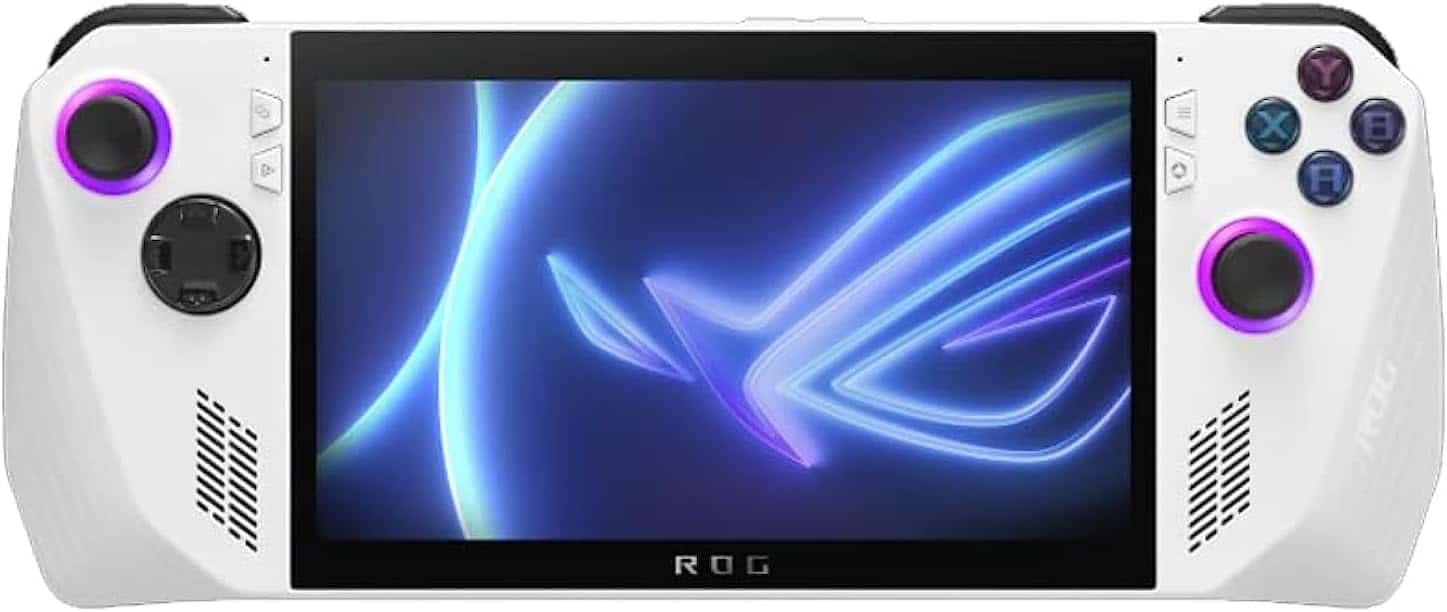Asus ROG Ally vs Steam Deck – which is for you?

Table of Contents
In this article, we’ll compare the Asus ROG Ally vs Steam Deck, two popular gaming machines, and help you determine which one might be the better fit for your needs. So, if you’re on the lookout for a great portable gaming device, you’ve probably heard about them. These two are currently the top choices for handheld gaming
Both of these devices offer an enticing blend of power and portability, but they cater to slightly different audiences. However, they both run a range of popular PC games, and have access to multiple launchers for ease of use, such as EA.
Prime Day is finally here! Find all the biggest tech and PC deals below.
- Sapphire 11348-03-20G Pulse AMD Radeon™ RX 9070 XT Was $779 Now $739
- AMD Ryzen 7 7800X3D 8-Core, 16-Thread Desktop Processor Was $449 Now $341
- ASUS RTX™ 5060 OC Edition Graphics Card Was $379 Now $339
- LG 77-Inch Class OLED evo AI 4K C5 Series Smart TV Was $3,696 Now $2,796
- Intel® Core™ i7-14700K New Gaming Desktop Was $320.99 Now $274
- Lexar 2TB NM1090 w/HeatSink SSD PCIe Gen5x4 NVMe M.2 Was $281.97 Now $214.98
- Apple Watch Series 10 GPS + Cellular 42mm case Smartwatch Was $499.99 Now $379.99
- ASUS ROG Strix G16 (2025) 16" FHD, RTX 5060 gaming laptop Was $1,499.99 Now $1,274.99
- Apple iPad mini (A17 Pro): Apple Intelligence Was $499.99 Now $379.99
*Prices and savings subject to change. Click through to get the current prices.
The Asus ROG Ally, with its vibrant RGB lights and sharp-edged design, is a quintessential gaming machine. It’s bold, loud, and uncompromising, with a focus on providing the best possible gaming performance in a handheld console. It’s due to be released in June 2023.
On the other hand, the Valve Steam Deck takes a more subtle approach. It trades in the ostentatious gaming aesthetic for a sleek and understated design that wouldn’t look out of place in a professional setting.
So, whether you’re attracted to the flash and power of the ROG Ally or the understated functionality of the Steam Deck will depend largely on your personal taste and gaming preferences.
Asus ROG Ally vs Steam Deck: Specs
Both the Asus ROG Ally and the Valve Steam Deck are equipped with impressive hardware, but each has its own unique strengths. It’s worth noting they both feature a headphone jack and USB-c connectivity options.
Starting with the Asus ROG Ally, this handheld gaming PC comes with an AMD Ryzen Z1 Extreme processor. This chip, built on the Zen 4 architecture, boasts 8 cores and 16 threads, reaching speeds up to 5.1 GHz. It comes paired with integrated AMD Radeon graphics based on the latest RDNA 3 architecture. This combination gives the ROG Ally a considerable amount of power for a handheld gaming device. The device also includes 16GB of LPDDR5-6400 RAM and a sizable 512GB M.2 SSD for storage. It runs on the Windows 11 operating system.
On the other hand, the Steam Deck is powered by a custom APU developed by AMD, combining a quad-core Zen 2 CPU and RDNA 2 GPU. It is available in three storage options: 64GB eMMC, 256GB NVMe SSD, and 512GB NVMe SSD, with the latter two providing faster loading times. While it might not match the ROG Ally in raw power, it’s still more than capable of running most modern games. It runs on a Linux operating system.
What does this mean for you? Well, if you’re the type of gamer who wants the latest and greatest in handheld gaming tech, the ROG Ally with its advanced CPU and GPU, might be the best fit for you. Its high-end specifications make it a powerful machine that can handle demanding games with ease.
On the other hand, if you prioritize value for money and broad compatibility with your existing Steam library, the Valve Steam Deck might be the better choice. It’s designed with the full breadth of the Steam catalog in mind, meaning it should be able to handle anything you throw at it. While it may not be as powerful as the ROG Ally, it still offers excellent performance for the price.
Asus ROG Ally vs Steam Deck: Performance
The ROG Ally, with its AMD Ryzen Z1 Extreme processor and RDNA 3 graphics, offers significantly higher performance levels compared to the Steam Deck. It’s capable of delivering a more powerful gaming experience with higher frame rates and more detailed graphics. The Ally also has the upper hand with a 30W power envelope in Turbo mode, allowing it to push its components further than the Steam Deck, which tops out at 15W. It also comes with some bonus features like the Armoury Crate, which neatly organises launchers, and three months of an Xbox game pass.
However, the Steam Deck, despite its less powerful Zen 2 CPU and RDNA 2 GPU, still delivers impressive performance. It is built specifically to offer a smooth gaming experience across the vast majority of the Steam library. Its more conservative power consumption may also lead to cooler, more comfortable handheld gaming sessions.
Asus ROG Ally vs Steam Deck: Price
Price is another important aspect to consider. The ROG Ally costs $700 for the Z1 Extreme version, whereas the Steam Deck starts at $400 for the 64GB model. For a comparable 512GB storage model, the Steam Deck is priced at $650. This makes the price difference relatively small at just $50 for similar storage capacity.
While the ROG Ally offers superior performance, it does come with a slightly higher price tag. On the other hand, the Steam Deck offers good value for money, providing a capable handheld gaming experience at a lower price point.
Final Thoughts
If you’re looking for top-notch performance and don’t mind spending a bit more, the ROG Ally is an excellent choice and possibly a clear winner. On the other hand, if you want a more affordable device that still provides a great gaming experience and seamless integration with your Steam library, the Steam Deck is still a solid contender. Both are easily customized with a range of accessories and have a decent battery life.



